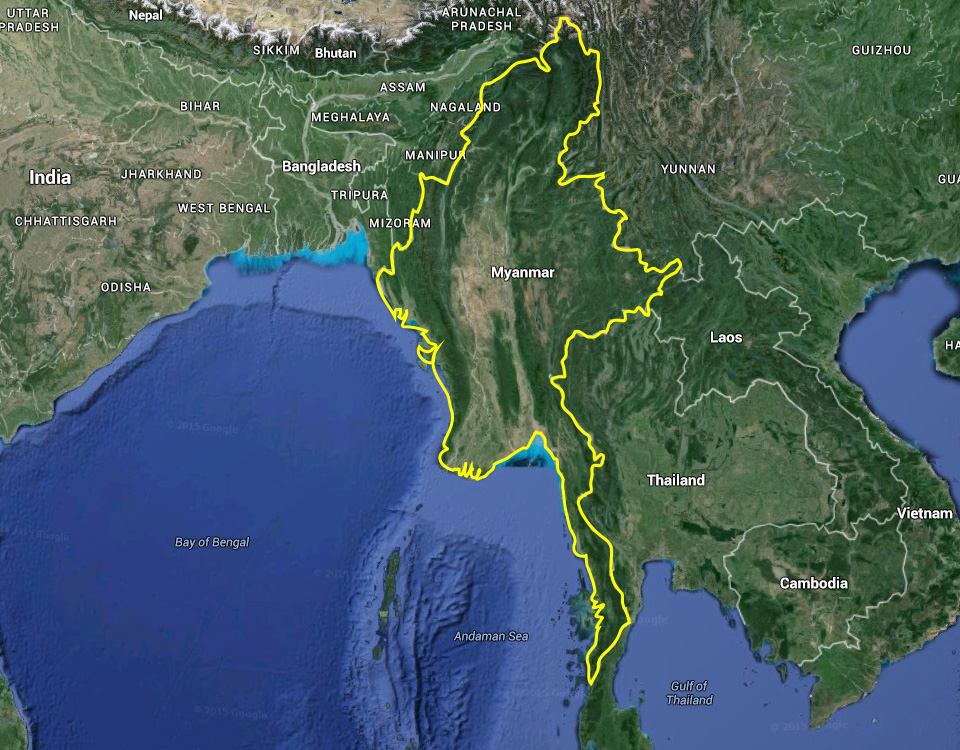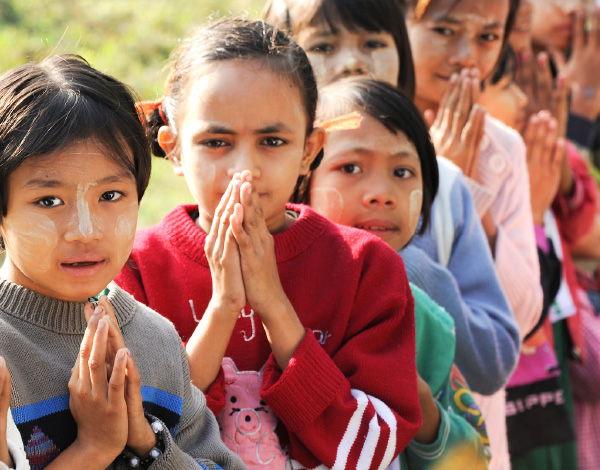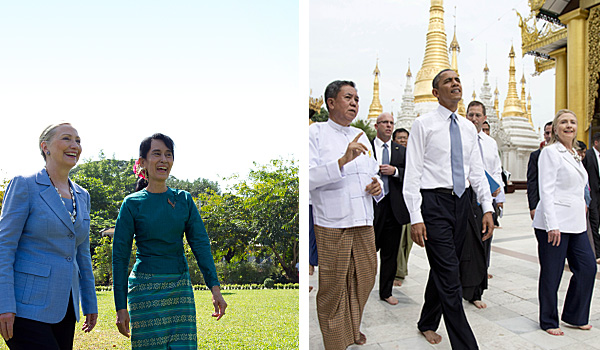Myanmar: Asia’s Last Frontier
Myanmar at a Glance


| GDP: | $84.4 billion (2018) |
| GDP Growth: | 6.2% (2017/18) 6.5% (2018/19E) |
| Population (Urban Population %): |
53.7 million (30.6%) |
| GDP per Capita: | US$1,572 (2018) US$1,700 (2019E) |
| Currency: | Floated on April 1, 2012 1,533 Kyat per 1 USD on 30th September, 2019 |
| Land Area: | 676,577 km2; (Smaller than Texas - 696,241 km2); (Bigger than France - 643,801 km2) |
| Border Countries (Border km): |
China (2,129 km) India (1,468 km) Bangladesh (271 km) Laos (238 km) Thailand (2,416 km) |
| Major Cities (Population in million): |
Yangon (7.36), Mandalay (1.73), Naypyidaw (1.16) |
Investment Highlights
01IMMENSE GROWTH POTENTIAL UNDERPINNED BY SOLID FUNDAMENTALS

Myanmar’s economy grew steadily at 7.5% over the past 4 years; IMF forecasts Myanmar will grow faster than the Emerging Market and Developing Economies Index as well as ASEAN-5 by 2.7% and 2.3% respectively on average over the next 5 years. It has been one of the top three fastest growing economies in Asia Pacific for the past ten years, and is predicted to take a commanding lead in the next decade: top three in the world, number one in Asia.
The country is evolving into a middleincome nation as the Asian Development Bank predicts that per capita income is set to triple over the next 18 years.
Myanmar also has a favorable demographic mix. Out of 33.9 million people aged 15 years and over, 31.5 million are reported to be literate, representing a literacy rate of 92.8%.
02NATURAL RESOURCE-RICH ECONOMY IN A STRATEGIC GEOGRAPHIC LOCATION

Located among China (2,185 km border), India (1,463 km border), Bangladesh (193 km border) and the ASEAN countries of Laos (235 km border) and Thailand (1,800 km border), Myanmar offers access to its neighbors and a combined market of close to three billion people.
Historically, Myanmar had been the main trade route between India and China since 100BC. Under British rule, it was the wealthiest country in Southeast Asia. It was also once the world’s largest exporter of rice, one of the largest producers of precious stones and produced 75% of the world’s teak.
The nation continues to be one of the most hydrocarbon-rich countries in Asia with a potential 10.2 trillion cubic meters of natural gas and 4.6 billion barrels of crude oil, and its vast resources have attracted substantial amount of investments by its neighbors.
03RAPIDLY IMPROVING DIPLOMATIC AND ECONOMIC LINKS WITH GLOBAL ECONOMY, ESPECIALLY WITH THE U.S.

Myanmar is a member of the Association of Southeast Asian Nations (ASEAN), and played host to the annual summit in 2014. Comprised of 10 nations accounting for a combined GDP of $2.5 trillion, ASEAN provides excellent benefits and access in terms of trade and relations to its member states.
Myanmar stands to benefit greatly from proposed free trade agreements like the ASEAN Economic Community (AEC) and the Regional Comprehensive Economic Partnership (RCEP). In addition, the emerging policies and programs of China’s One Belt One Road initiative will also likely provide substantial economic benefit.
The U.S. Office of Foreign Assets Control (OFAC) lifted longstanding trade sanctions against Myanmar in 2012. In 2014 Obama paid a second historic visit to Myanmar while frequency of visits from other world leaders has also greatly increased. After successful elections in November 2015, the US further lifted selected sanctions and removed seven state-owned enterprises and three state-owned banks from their SDN List. OFAC said these changes were intended to support trade, facilitate movement of goods, assist US individuals residing in Myanmar, and mitigate restriction on most financial transactions. All these moves point to the strong possibility of even more sanctions relief, or even all-out removal, down the road.
04IMPROVING LEGAL FRAMEWORK AND A MUCH ANTICIPATED ADMINISTRATION OPEN TO FURTHER REFORM

The new Myanmar Investment Law 2016 (MIL) was signed into legislation by the President in October 2016. The new law is seen to level the playing field for foreigners and locals and provide a more streamlined process for new investment. In April 2012, The Central Bank of Myanmar allowed the value of the nation’s currency (Kyat) against the US Dollar to float, setting an initial rate of 818 Kyat per US dollar. On April 1, 2017, the rate was at US$1: Kyat 1,370.
In October 2014, Myanmar authorities opened up the financial sector and issued licenses to 9 overseas banks. The country also loosened control over restricted industries like telecoms. In June 2013, the Ministry of Communications and Information Technology, now called the Ministry of Transport and Communication, issued two licenses to foreign operators, Norway’s Telenor and Ooredoo from Qatar, introducing competition against the state-owned monopoly Myanmar Post and Telecommunication (MPT). Other sectors like oil and gas also continue to benefit from liberalization.
The general election held in November 2015 was hailed across the globe as largely a success. With a parliament majority, Aung San Suu Kyi’s National League for Democracy (NLD) party has taken their seats in 2016. As the old government’s term has ended in March 2016, the NLD was able to select the country’s new president, and began its much anticipated administration to lead the country.
05LOW-COST, ATTRACTIVE ENTRY VALUATIONS AHEAD OF PREDICTED ECONOMIC BOOM

Myanmar is in its recovery stage at low valuations with few established investors, implying very high upside for investments in Myanmar vs. in other emerging markets in Asia such as the Philippines, Vietnam and Mongolia.